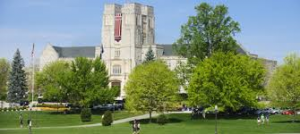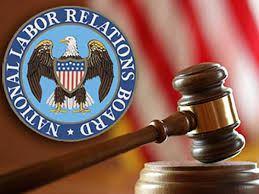OVERVIEW On March 10, 2014, the Securities and Exchange Commission (“SEC”) announced a voluntary self-reporting program for issuers and underwriters of municipal bonds for reporting of inaccurate statements made in offering documents regarding prior continuing disclosure compliance through a program called the Municipalities Continuing Disclosure Cooperation Initiative (the “MCDC initiative”). The MCDC initiative permits issuers and obligated persons, for a limited time only, to self-report misstatements concerning prior compliance with continuing disclosure obligations in an official statement for a municipal bond issue. In exchange, the SEC Division of Enforcement agrees to recommend favorable settlement terms for issuers and obligated persons involved in the offering of those municipal bonds. The Division of Enforcement has warned that it will likely recommend seeking significant financial sanctions against issuers and obligated persons that elect not to participate in the MCDC initiative and that are determined to have made material misstatements in an official statement concerning their prior compliance with their continuing disclosure obligations. Both underwriters and issuers (a term which includes colleges and universities as obligated persons) can participate in the MCDC initiative by completing a questionnaire and submitting it no later than September 10, 2014 in the case of underwriters, or December 1, 2014 in the case of issuers and obligated persons. The MCDC initiative potentially applies to all colleges and universities that issued tax-exempt debt during the last five years. CONTINUING DISCLOSURE For official statements for bonds issued on behalf of a college or university, institution is considered to be the issuer with responsibility for the various statements in the official statement, including statements concerning its prior compliance with its continuing disclosure obligations. Generally, under SEC Rule 15c-2(12), colleges or universities are required to describe failures to comply with prior continuing disclosure obligations over the last five years. Since 1993, SEC Rule 15c-2(12) has obligated underwriters to require colleges or universities to enter into continuing disclosure agreements that mandate annual filing of audited financial statements and certain financial and operating data for dissemination to the municipal marketplace. The obligation to provide continuing disclosure applies to most long-term bond issues with the exception of certain variable rate demand bonds secured by letters of credit. Under most continuing disclosure agreements, a college or university is required to file its annual financial statements and certain operating and financial data with designated repositories, currently the Municipal Securities Rulemaking Board’s Electronic Municipal Market Access (“EMMA”) system within 180 days of the end of each fiscal year. Colleges and universities must also file notices of certain material events. Material events include:
(a) principal and interest payment delinquencies;
(b) non-payment related defaults, if material;
(c) unscheduled draws on any debt service reserves reflecting financial difficulties;
(d) unscheduled draws on credit enhancements reflecting financial difficulties;
(e) substitution of credit or liquidity providers, or their failure to perform;
(f) adverse tax opinions, the issuance by the Internal Revenue Service of proposed or final determinations of taxability, Notices of Proposed Issue (IRS Form 5701-TEB), or other material event notices or determinations with respect to the tax status of the bonds, or other material events affecting the tax status of the bonds;
(g) modifications to the rights of holders of the bonds, if material;
(h) bond calls, if material, and tender offers;
(i) defeasances;
(j) release, substitution, or sale of property securing repayment of the bonds, if material;
(k) rating changes;
(l) any bankruptcy, insolvency, receivership or similar event of the obligor;
(m) the consummation of a merger, consolidation or acquisition involving the obligor or the sale of all or substantially all of the assets of the obligor, other than in the ordinary course of business, the entry into a definitive agreement to undertake such an action or the termination of a definitive agreement relating to any such actions, other than pursuant to its terms, if material; and
(n) appointment of a successor or additional trustee or the change of name of a trustee, if material.
Notices of material events are generally required to be filed within ten (10) business days of the occurrence of the material event. CONTINUING DISCLOSURE COMPLIANCE PROBLEMS Generally, under SEC Rule 15c-2(12), colleges and universities are required to describe failures to comply with prior continuing disclosure obligations over the last five years. There is a five year statute of limitations for SEC enforcement actions so the MCDC initiative covers potential continuing disclosure compliance misstatements or omissions in official statements published within the past five years. SEC SETTLEMENT TERMS Under the MCDC initiative, if the SEC Division of Enforcement concludes that there has been a violation, the SEC settlement would require the college or university to do the following as part of an agreed cease and desist order resolving the SEC proceeding:
- Establish policies, procedures and training regarding continuing disclosure obligations within 180 days;
- Comply with existing continuing disclosure undertakings and bring all prior filings up to date within 180 days of institution of the proceedings;
- Cooperate with any subsequent investigation by the SEC Division of Enforcement regarding the false statements, including the roles of individuals and/or other parties involved (underwriters, financial advisors, attorneys);
- Disclose in a clear and conspicuous fashion the settlement terms in the final official statement for any offering by the college or university within five years of the date of institution of the proceeding; and
- Provide the SEC staff with a compliance certification regarding the applicable continuing disclosure undertakings by the college or university on the one year anniversary of the date of institution of the proceedings.
PRISONER’S DILEMMA The MCDC initiative creates tension between obligors and underwriters, or what is called a “prisoner’s dilemma.”. Both the college or university and the underwriter are required to self-report any material misstatement or omission in a final official statement concerning prior compliance with continuing disclosure obligations. If one party self-reports and the other does not, a problem arises for the second party if the SEC staff determines that the facts warrant an enforcement action. The MCDC initiative is clear that favorable settlement terms are only available for institutions and underwriters that elect to self-report. The SEC’s Division of Enforcement has stated that it will likely recommend and seek financial sanctions in amounts greater than those available under the MCDC initiative. Another complication is that the MCDC initiative only applies to institutions and underwriters as entities. Although a college or university may self-report and obtain a settlement under the predetermined terms, the SEC retains the right to seek enforcement action against individuals who may be culpable. This may include individuals working at the college or university, or third parties such as attorneys or financial advisors. This increases the difficulty in deciding whether and what to self-report. WHAT TO DO Any college or university that issued tax-exempt bonds in the last five years, it needs to review the statements made in the official statements concerning compliance with prior continuing disclosure obligations over the previous five years. In the case of a bond issue in 2010, this would require examination of continuing disclosure filings from 2005. If prior unreported continuing disclosure violations are discovered – failures to file, late filings, or non-reporting of material events that were not disclosed in an official statement – an analysis needs to be performed as to whether the misstatement or omission was “material.”. “Material” is not defined in securities law or regulations and depends on the overall facts and circumstances of a situation. One factor in this analysis is whether the failure would affect a bondholder’s confidence in the institution’s covenant to provide ongoing continuing disclosure. In the first instance, a college or university may make its own determination as to whether or not to self-report certain violations on the grounds that they are immaterial. For difficult cases, the MCDC initiative does provide a second review by the SEC staff. The SEC will review each submission and only recommend taking the predetermined enforcement action if the misstatements or omissions were material. Thus, a college or university may self-report while arguing that the circumstances disclosed are not material and should not result in enforcement action. If, however, SEC staff determines otherwise, the institution is still entitled to accept the sanctions included in the MCDC initiative. The ABA Journal is working on their annual list of the 100 best legal blogs. If you are a fan of this blog we would appreciate you taking the time to submit a Friend-of-the-Blawg Brief by 5 p.m. ET on Aug. 8, 2014. Following is a link to the submission form: http://www.abajournal.com/blawgs/blawg100_submit/


 On July 14, 2014, the United States Department of Education issued a
On July 14, 2014, the United States Department of Education issued a  Effective June 14, 2014, the
Effective June 14, 2014, the 
 In OCR’s April 2011
In OCR’s April 2011  The National Labor Relations Board’s treatment of college and university students as “employees” covered by the National Labor Relations Act has been the subject of a tortured history. In the Fall of 2000, in a case involving NYU, the NLRB
The National Labor Relations Board’s treatment of college and university students as “employees” covered by the National Labor Relations Act has been the subject of a tortured history. In the Fall of 2000, in a case involving NYU, the NLRB  Under Title IX, the concept of “responsible employee” has a great deal of significance, as recently reaffirmed by OCR in its
Under Title IX, the concept of “responsible employee” has a great deal of significance, as recently reaffirmed by OCR in its  n April, the Supreme Court issued its decision in
n April, the Supreme Court issued its decision in